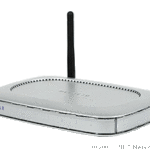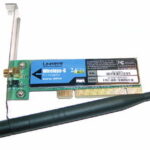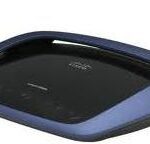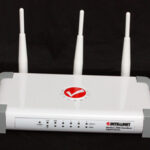Discovering OpenWrt
A few years ago, Linksys came out with the WRT54G line of WAP firewall/routers and used Linux as the OS for the device. In accordance with the GPL, Linksys made available the source code it used for the firmware. Several projects were born from that source code, and one of them is the OpenWrt distribution. The OpenWrt distribution is for wireless WAPs. It has various software packages that can be added after you install the firmware. It’s meant to be small and customizable, a minimalist approach to building a WAP. OpenWrt actually supports quite a few router models from various vendors: Linksys, Netgear, Motorola, ALLNET, ASUS, Buffalo, Dell, Microsoft (yeah, go figure), and ViewSonic. Both Linksys and Netgear actually have quite a few products that are based on the Linux operating system. I also have a Netgear WGT634U running OpenWrt.
The Linksys Wrt family is the most popular of the WAPs, and OpenWrt has support for a number of versions of the Wrt family. Recently, Linksys released a new model, the WRT54GC, the WRT54G v5, and the WRT54GS v5. None of these has enough memory to run Linux. They aren’t trying to rip people off; they’re just trying to compete with other vendors. At the same time, they also changed the WRT54G v4 to the WRT54GL, which they still sell. So, as you can see, they haven’t ignored the Linux community.
So what does OpenWrt provide that the Linksys firmware doesn’t provide? In addition to the support from the OpenWrt community for patches, fixes, and upgrades to your WRT54GL, you can add extra tools, such as ttcp, the test TCP/IP utility that can be used for performance testing, among other things. On the other hand, maybe you’d like to gather information about your router via SNMP (Simple Network Management Protocol). This can be useful to see what your daily, weekly, and monthly traffic looks like. It’s the flexibility that makes OpenWrt so useful.
Product Name (Supported?)
WRT54GC (No)
WRT54GL (Yes)
WRT54G (v1.0 – v4.0) (Yes)
WRT54G (v5.0) (No)
WRT54GS (v5.0) (No)
WRT54GS (v1.0 – v4.0) (Yes)
WRT54GP (No)
The best choice of router is between these two models:
1. WRT54GL, supported by OpenWrt: The WRT54GL is quite similar to the WRT54G v4.0. If you find code for the WRT54G v4.0 but not the WRT54GL, you can use the WRT54G v4.0 code because it is the same. The WRT54GL is the easiest to get because it’s in stores. Be careful, though, not to confuse the WRT54GL with the v5.0 or the GC model, which can be found on the shelf, side by side with the GL product. If you find two nearly identical WRTs that are priced dramatically differently, expect the cheaper one to be a GC or v5.0. The WRT54GL has its name written clearly on the box: “Model No.: WRT54GL.” It also has a green and black graphic on the front that starts with “Open Source.”
2. WRT54GS (v1.0 – v4.0), supported by OpenWrt: The GS part of the family has more memory. Don’t install software for it on the WRT54GL; there probably won’t be enough memory. Starting in the v4.0 of the G and GS family, Linksys improved the performance, so the best choice of hardware to get from this list is the WRT54GS v4.0. It has the best performance and the most RAM and flash storage.
Other models are supported, in progress, or not supported.






